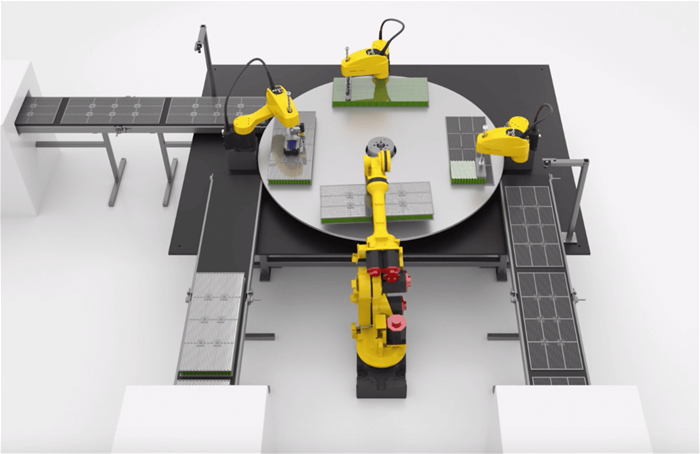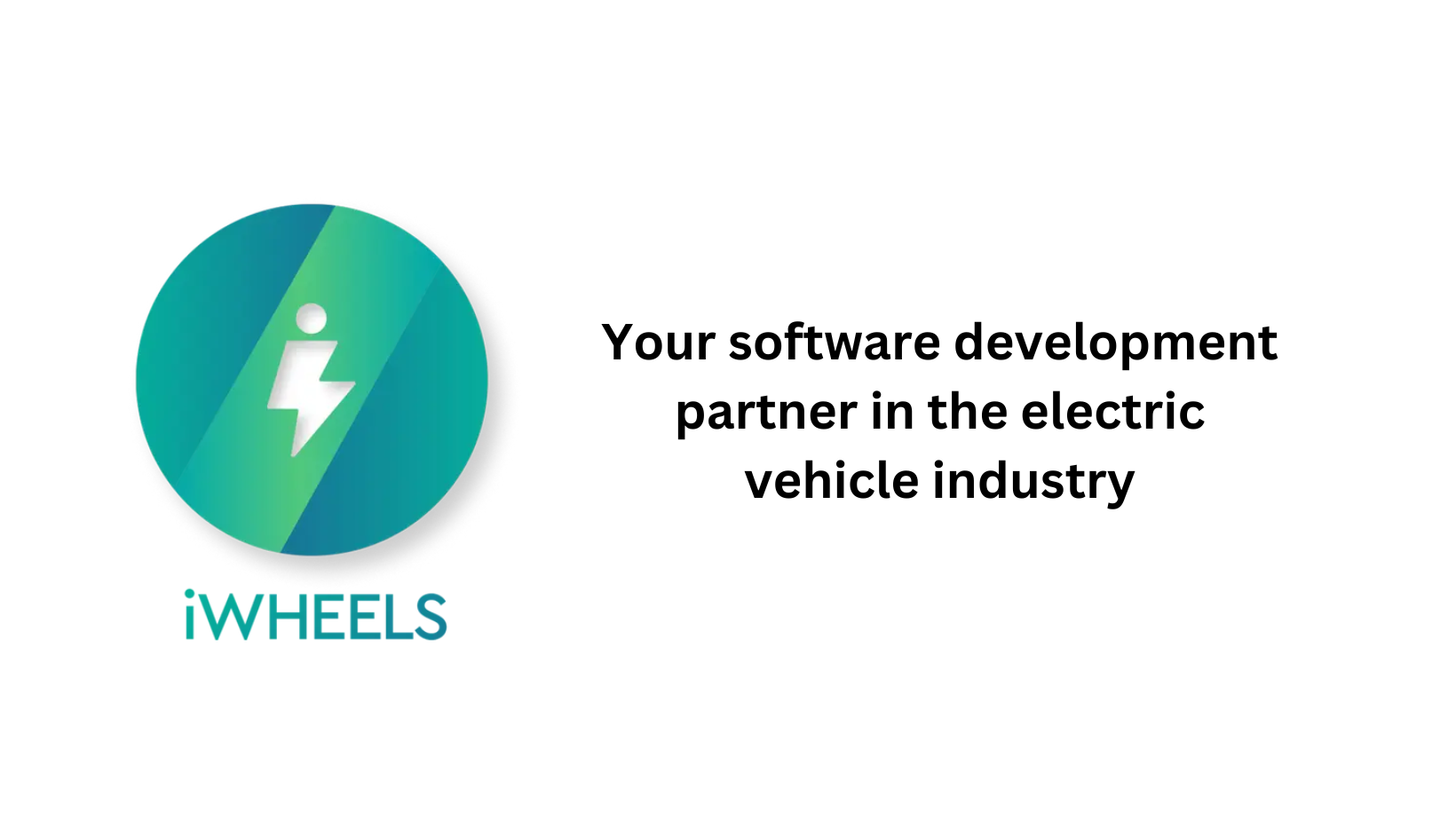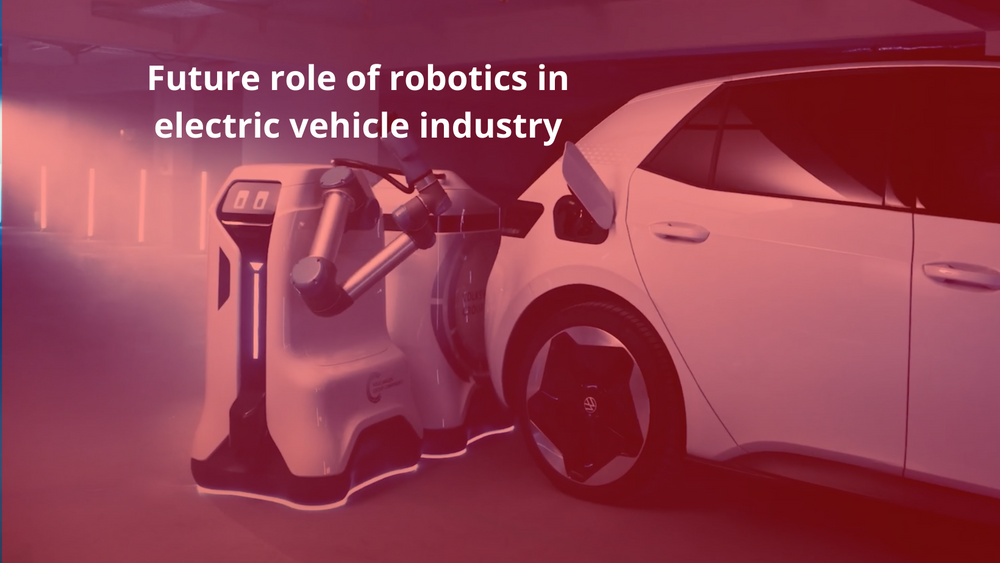Future role of robotics in electric vehicle industry
Hello People. This article discusses about the future role of robotics in electric vehicle industry. Electric vehicles are the future mode of full fledged transportation because of environmental benefits. At the moment, all industries are struggling with a shortage of semiconductors and other components, on top of a persistent pandemic. However, there’s one industry segment that’s doing very well and those are factory equipment manufacturers that supply robots and other equipment for automated production processes.
In conventional IC engine vehicles, spot welding is one of the most important applications of industrial robots. This technique is used to join together the main parts of a vehicle together to produce what’s called the shell of the car.
Coming to electric and autonomous vehicles, they contain far more sensors, microchips and all sorts of electronics than current cars do. This means smaller, more nimble robots, which may be more capable of working in smaller spaces for the installation of the computer and electronics technologies, may be seen more often in the typical automotive factory.

With the rising number of electric and hybrid vehicles the demand for customer friendly and innovative solutions for the charging infrastructure is growing steadily. Furthermore, future autonomous driving and parking vehicles are calling for new approaches regarding to battery charging. Nowadays electric vehicles have to be charged by hand. In other words, someone has to connect the charging cable with the charging socket of the vehicle.
Are you looking to start your business in the electric vehicle industry? We provide software development, web application development, mobile application development, charging stations management app, electric vehicle fleet management software development, cyber security and all software services. Please check our home page here https://iwheels.co/

Ok. Let's get back to the article.
Electric vehicle manufacturers are developing robots for their EVs. Volkswagen Group has developed a mobile electric vehicle charger that can autonomously navigate parking areas, power up an EV and then make its way back to its outpost without the intervention of humans. The charging robot prototype can be started via an app launched by the vehicle owner or car-to-x communication.
Once the communication begins, the mobile charger turns on — two digital eyes open on the display — and it steers toward a vehicle. The mobile charger opens the charging socket flap as well as connects or disconnects the plug. The mobile charger is also able to move and then connect the vehicle to an energy storage unit. Once the charging is complete, the robot collects the mobile energy storage unit and takes it back to a central charging station.
Medigus Ltd, a technology company engaged in advanced medical solutions, innovative internet technologies and electric vehicle and charging solutions has concluded a proof of concept, successfully demonstrating the capabilities of its electric vehicle wireless charging robot.
The demonstration system by the above mentioned company consists of a robotic platform capable of autonomous navigation. The robotic platform carries an energy transmitting coil, batteries and supporting electronics. The second component of the system is an EV simulating unit, which houses the target batteries to be charged, an energy receiving coil and the supporting electronics.
Charging Robotics mission is to overcome one of today's biggest challenges in wireless charging of electric vehicles-seamless, highly efficient battery charging for both manned and unmanned vehicles.
The robot navigated from its home position along a predefined route to the starting position, which is a point close to the optimal charging position. Charging occurs at the maximum rate when both coils are perfectly aligned.
Following arrival to the starting position, the alignment process begins. As the energy was transmitted from the Robot transmitting coil to the receiving coil, the robot was ordered to move in small increments in order to optimize the charging rate.
The whole process demonstrated a charging efficiency of 93% at a power of 1kW and was capable of reaching the starting position as well as completing the alignment process.
At no time did any part of the system come in physical contact with the other. Coils were positioned about 5 cm apart, and the robot ensured good alignment between them.
Charging Robotics is developing an on-demand autonomous charging system to be used anywhere, anytime. The wireless charging system being developed is intended to be self-aligning to electric vehicle battery chargers.
The state-of-the-art autonomous Wireless Power Transfer (WPT) technology, once developed, is intended to seamlessly and efficiently charge the vehicle upon demand, will carry the Wireless Power Transfer from a charging station or charging truck, to a customer’s vehicle that needs electric charging.
Hope this article on Future role of robotics in electric vehicle industry is useful to you. To read about jobs in the Electric Vehicle Industry, please visit Job opportunities in Electric Vehicle Sector and its Charging Infrastructure industry

